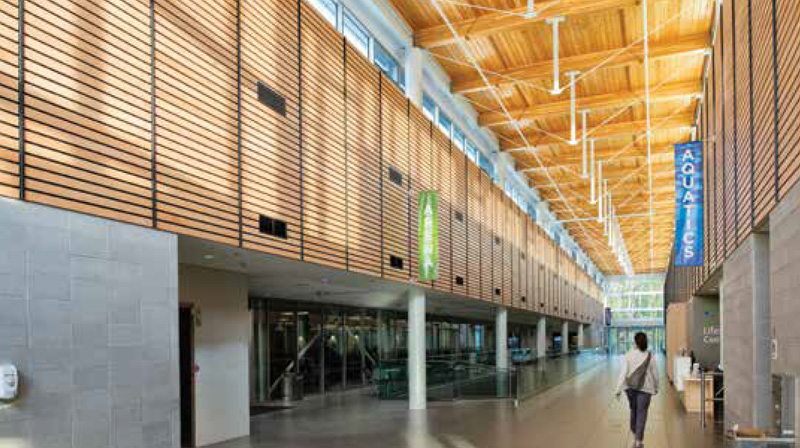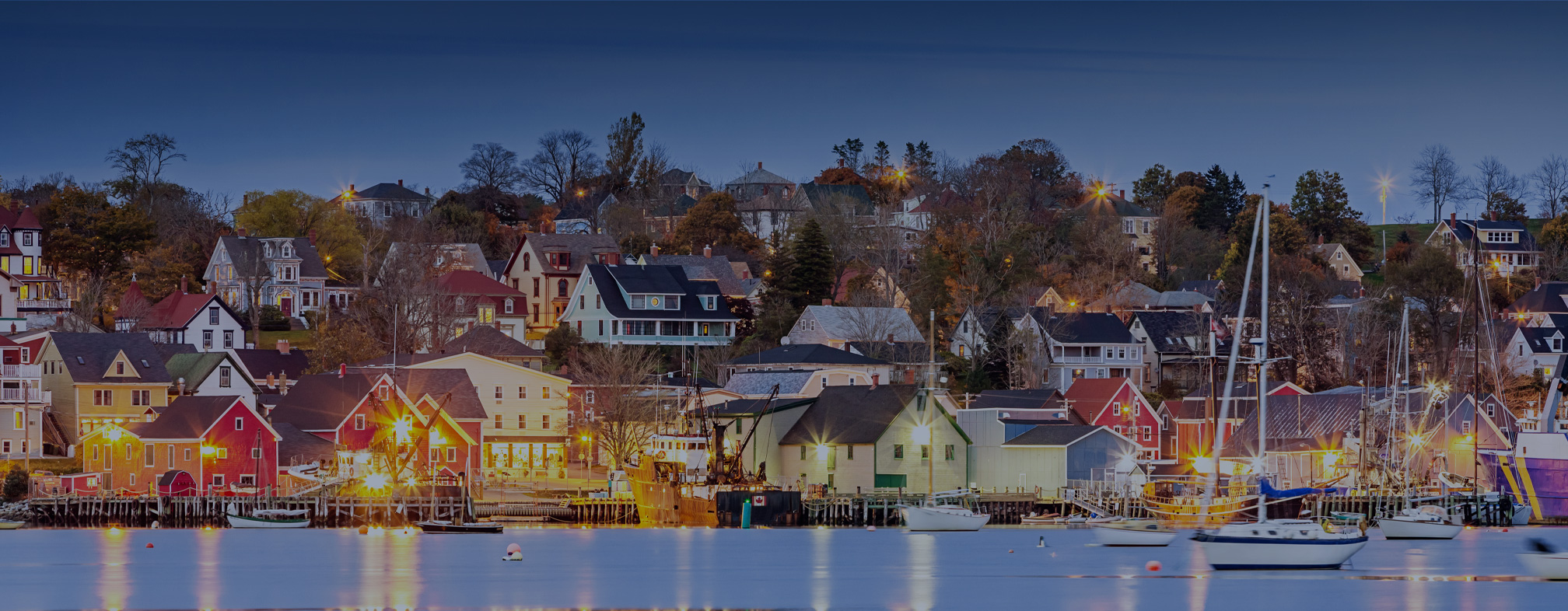South shore Nova Scotian building combines sustainable design and local culture

Both the land and the sea provided design inspiration for this new lifestyle centre on the south shore of Nova Scotia. Lunenburg County is both coastal and deeply forested with centuries-long traditions of timber construction and wooden boat building.
Rolling hills overlook the many bays along the Atlantic Ocean where the Lunenburg County Lifestyle Centre sits within an undulating forest setting. This context informed the design approach for the project.
The $35-million facility hosts community, recreation and cultural events while promoting individual health, literacy and fitness. The engaging connections created by the diverse program, visual transparency and a clear plan create a strong sense of place and a destination embraced by local residents.
The 10,200m2 recreation program is divided into four main components: an NHL regulation-sized ice surface; an aquatics facility that includes a six-lane, 25-metre lap pool, a leisure pool, and a therapy spa pool; a 740m2 regional library, and a complement of fitness, multi-purpose and administrative spaces.
The arena is acoustically designed to operate as a hockey rink, concert venue and conference facility. Raised seating in the arena provides improved spectator viewing and unimpeded circulation around the rink for conference and concert use.
The concrete and Steel truss arena is designed for multiple functions including concerts and conferences [2]. The aquatic facility, with A wood deck supported by Steel framing, includes a 25-metre lap pool and a therapy SPA pool [3]. The nonrecreational program areas were located for light, views and direct access to the surrounding landscape.
The joint venture architectural team wanted to achieve a strong architectural expression that would be regionally and culturally appropriate, while addressing an ambitious environmental agenda on a demanding site.
One of the challenges was to accommodate a five-metre drop in landscape running diagonally across the site from west to east. Taking advantage of the natural slope, the arena was nestled into the hillside, so that the upper concourse seating would be at the facility’s entry level. The more contemplative program elements were located at that southern end of the building, providing light, views and direct access to a landscape of preserved trees and the stream that defines the southern boundary of the site.
A central Galleria runs parallel to the arena and aquatic centre, with the library at the southern end. The naturally daylit Galleria is the main street of the project, providing the strongest reference to the timber industry and maritime heritage of the region. The upper levels are lined with linear maple hardwood slats that provide both visual warmth and - by way of their open spacing - an acoustic dampening function. The ceiling is a combination of 38 mm-thick tongue-and-groove wood decking and Douglas fir glulam beams.
Tying the beams together are a series of king post trusses which gradually arc along the length of the Galleria, emblematic of the draft of the famed Bluenose I schooner, a cultural totem for the surrounding communities. This wood-lined Galleria is a dramatic, unifying element, providing physical and visual links to all the activities within the facility, as well as to the forested vistas beyond.
The community expressed a strong commitment to sustainability, and LeeD Gold certification is being pursued. A number of initiatives were implemented to reduce the environmental impact and energy demand of the building.
Given the scale of the building enclosure, a high-performance building envelope was employed with R25 walls and an R30 roof assembly. The building incorporates several energy-saving elements into the design of its mechanical systems including heat recovery for the arena refrigeration plant that captures waste heat for pool water heating, DualCore® energy recovery ventilators made in Manitoba, roof-mounted solar panels for heating domestic and pool water, and variable speed drives on fans and pumps. The dehumidification system controls the relative humidity in the pool area, but also recovers the heat contained in the water vapour in the air and recycles it back to the pool water to deliver significant energy savings. The system also uses a glycol loop to recover energy from the exhaust air to heat incoming fresh air for ventilation purposes.
A geothermal field provides storage and a retrieval source for the waste heat, while recycled grey water collected from the roof is stored in a large cistern and used for plumbing and irrigation purposes. electric car charging stations are located in the adjacent parking area.
The Galleria itself provides a source of natural ventilation, taking advantage of its height for stack effect. Motorized windows at both the north and south end provide low-level entry while upper level clerestory windows allow the hot air to exit, activated with temperature sensors and monitored by the building management system.
The result is an integrated and sustainable facility, highlighting its spectacular natural location and paying tribute to its industrial and maritime roots.
Project Performance
- Energy intensity = 242eKWh/m2/year
- Energy intensity reduction relative to reference building under mNECB 1997 = 63%
- Potable water consumption from municipal sources = 3704m3/year
- Reduction in potable water consumption relative to LEED 2009 reference building = 47%
- Recycled material content = 30.65%
- Regional materials = 30.54%
Materials
- Mixed concrete, steel and wood construction
- DualCore® energy recovery ventilators made by tempeff in Manitoba
- Pool dehumidification and energy recovery unit with energy recycling indoor pool dehumidification system designed and built by Seresco technologies in Ottawa.
- Arena refrigeration plant captures waste heat for pool water heating
- Roof-mounted solar panels for heating domestic and pool water




